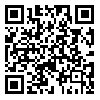Volume 12, Issue 5 (Dec & Jan 2019)
payavard 2019, 12(5): 398-406 |
Back to browse issues page
Download citation:
BibTeX | RIS | EndNote | Medlars | ProCite | Reference Manager | RefWorks
Send citation to:



BibTeX | RIS | EndNote | Medlars | ProCite | Reference Manager | RefWorks
Send citation to:
Changizi V, Mianji F, Ghaderbeygizad F, Mohammadi F. Comparing Cardiologists’ Effective Dose of Right and Left Eyes in Femoral and Radial Angiography in a Hospital in Mehran. payavard 2019; 12 (5) :398-406
URL: http://payavard.tums.ac.ir/article-1-6652-en.html
URL: http://payavard.tums.ac.ir/article-1-6652-en.html
1- Professor, Radiation Sciences Department, School of Allied Medical Sciences, Tehran University of Medical Science, Tehran, Iran
2- Assistant Professor, Nuclear Science and Technology Research Institute, Atomic Energy Organization of Iran, Tehran, Iran
3- Master of Sciences Student in Radiation Biology and Radiation Protection, School of Allied Medical Sciences, Tehran University of Medical Science, Tehran, Iran ,Ghaderbeygi.fereshteh@gmail.com
4- Master of Science in Radiation Biology and Radiation Protection, School of Allied Medical Sciences, Tehran University of Medical Science, Tehran, Iran
2- Assistant Professor, Nuclear Science and Technology Research Institute, Atomic Energy Organization of Iran, Tehran, Iran
3- Master of Sciences Student in Radiation Biology and Radiation Protection, School of Allied Medical Sciences, Tehran University of Medical Science, Tehran, Iran ,
4- Master of Science in Radiation Biology and Radiation Protection, School of Allied Medical Sciences, Tehran University of Medical Science, Tehran, Iran
Abstract: (4170 Views)
Background and Aim: Coronary angiography (CA) is a diagnostic and therapeutic procedure for cardiac complexity, that has a high dose and high fluoroscopy time. The effective dose of eye lens as a radiosensitive organ in long-term exposure to CA must be evaluated.
Materials and Methods: A cross-sectional study was performed with Siemens under-bed machine in Imam Hossein Hospital of Mehran, Ilam Province of Iran, in January and February 2016. In this study, TLD was used as personal dosimeter. To measure the effective doses, TLD was put on the external side of cardiologists’ eyes under lead glasses. Data were analyzed by spss22 at a significant level (p<0.05).
Results: The mean fluoroscopy time in the radial route was 3.17±2.11 and in the femoral route was 12.65±6.97 minutes (p=0.003). The mean effective doses of cardiologists’ right and left eyes in radial and femoral angiography were 0.003, 0.005 (p=0.02) and 0.008, 0.011 (p=0.748), respectively. The mean effective dose of eye lens in the use of radial route was obtained less than that of femoral route. The mean effective doses in right and left eyes were not significantly different in the use of radial and femoral routes.
Conclusion: Fluoroscopy time and the distance of source are the main factors of more radiation on cardiologists.
Materials and Methods: A cross-sectional study was performed with Siemens under-bed machine in Imam Hossein Hospital of Mehran, Ilam Province of Iran, in January and February 2016. In this study, TLD was used as personal dosimeter. To measure the effective doses, TLD was put on the external side of cardiologists’ eyes under lead glasses. Data were analyzed by spss22 at a significant level (p<0.05).
Results: The mean fluoroscopy time in the radial route was 3.17±2.11 and in the femoral route was 12.65±6.97 minutes (p=0.003). The mean effective doses of cardiologists’ right and left eyes in radial and femoral angiography were 0.003, 0.005 (p=0.02) and 0.008, 0.011 (p=0.748), respectively. The mean effective dose of eye lens in the use of radial route was obtained less than that of femoral route. The mean effective doses in right and left eyes were not significantly different in the use of radial and femoral routes.
Conclusion: Fluoroscopy time and the distance of source are the main factors of more radiation on cardiologists.
Send email to the article author
| Rights and permissions | |
 |
This work is licensed under a Creative Commons Attribution-NonCommercial 4.0 International License. |





